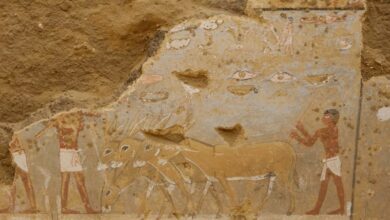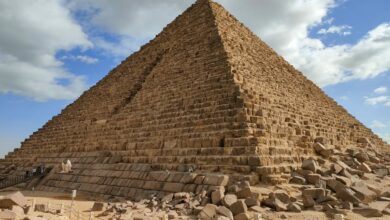A German archaeological mission has unearthed a granite statue of King Ramses II, one of the most significant figures of the pharaonic modern kingdom.
Ramses ruled Egypt between 1304 and 1237 BC.
Adel Hussein, director of the Antiquities Ministry's Lower Egypt sector, said in a statement on Monday that the 2.47-meter statue has been discovered at Tal Basta in Sharqiya. The piece shows Ramses II sitting between the goddess Bastit and the god Atum, the statement said. Deep inscriptions with the king's name are found on its back.
The goddess Bastit was represented in the form of a cat and was worshipped at Tal Basta, where the Ramses II statue was unearthed.
Atum, a pharaonic word for "perfect,” was believed by ancient Egyptians to have created himself. Mythology holds he later united with the god Ra, becoming Atum Ra.
An Egyptian mission also discovered the remains of a citadel’s gates and pillars at Tal Habwa in North Sinai that date back to Ramses II’s time, the statement said. The findings bear inscriptions of the king’s name and phrases such as “Atum’s beloved one” and the “protector of Egypt.”




